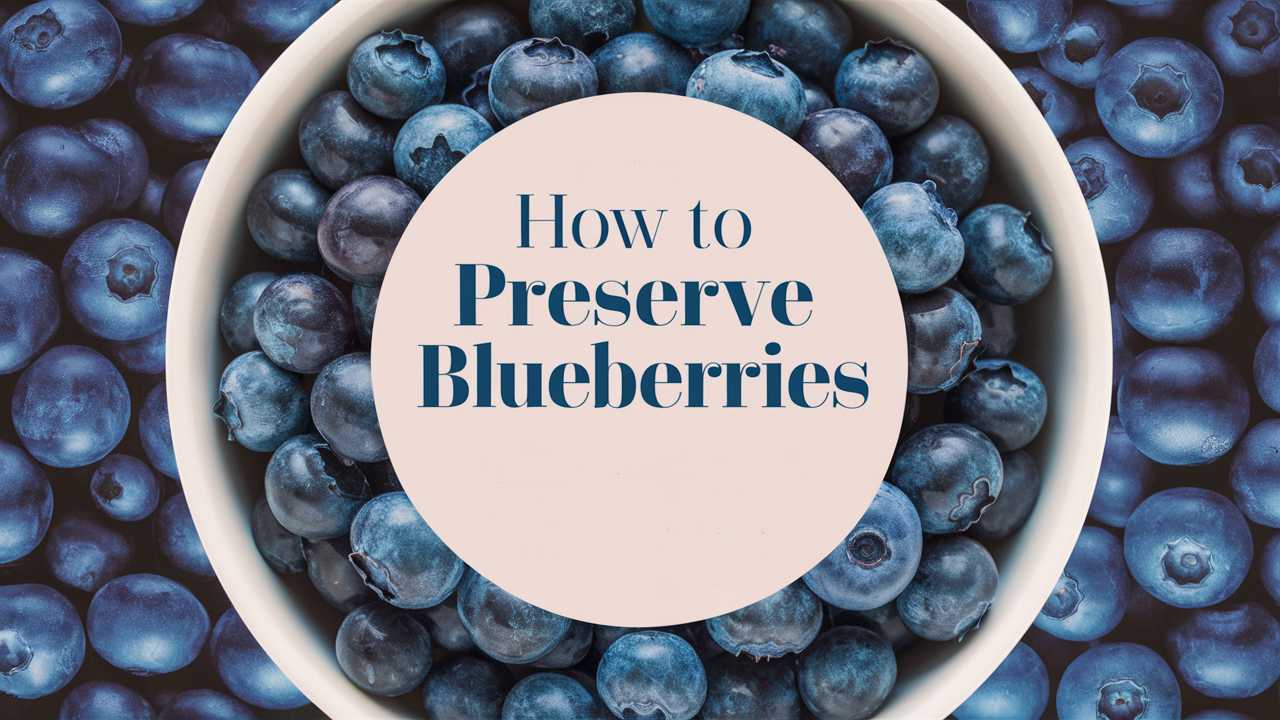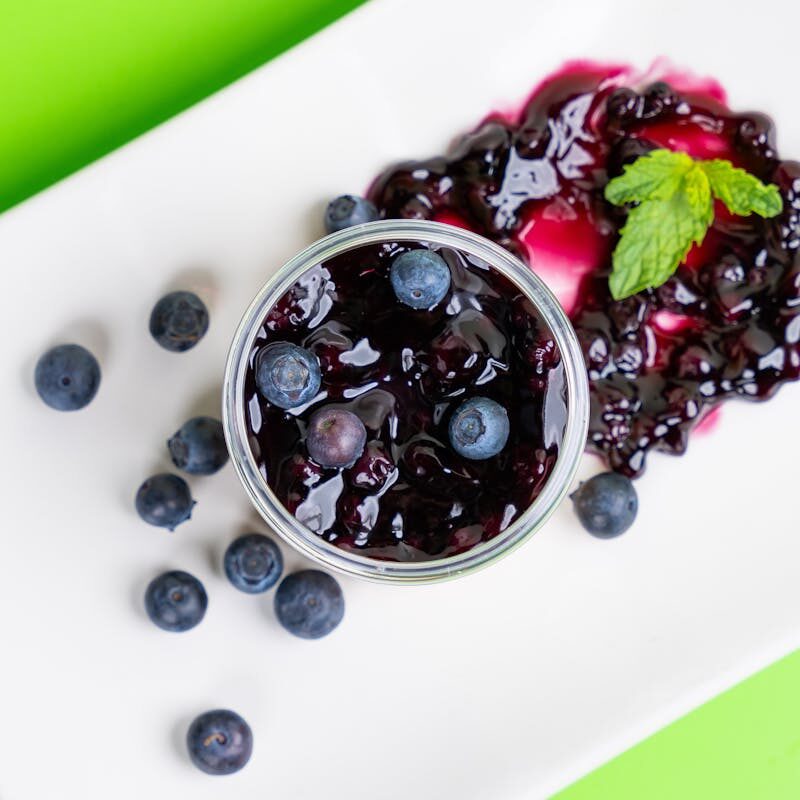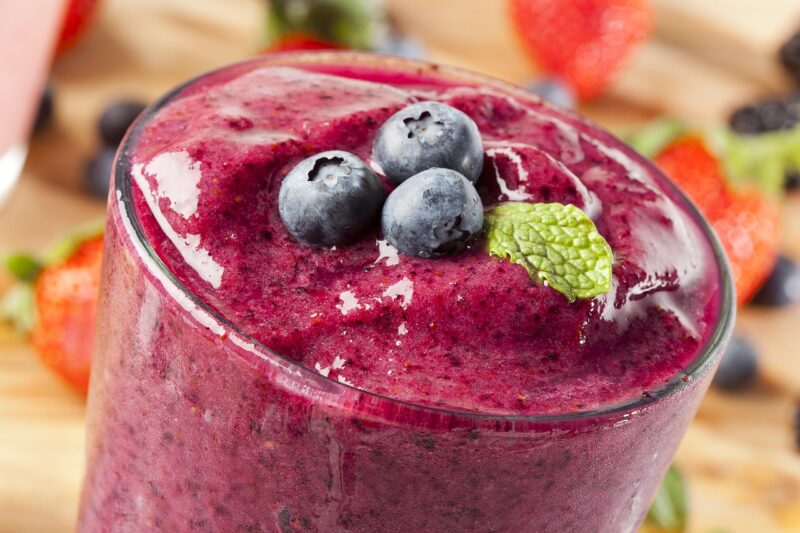In this extensive guide, we’ll explore different methods for preserving blueberries, the science behind each technique, and tips for maintaining their taste and nutritional value.
Freezing Blueberries: A Simple Yet Effective Method
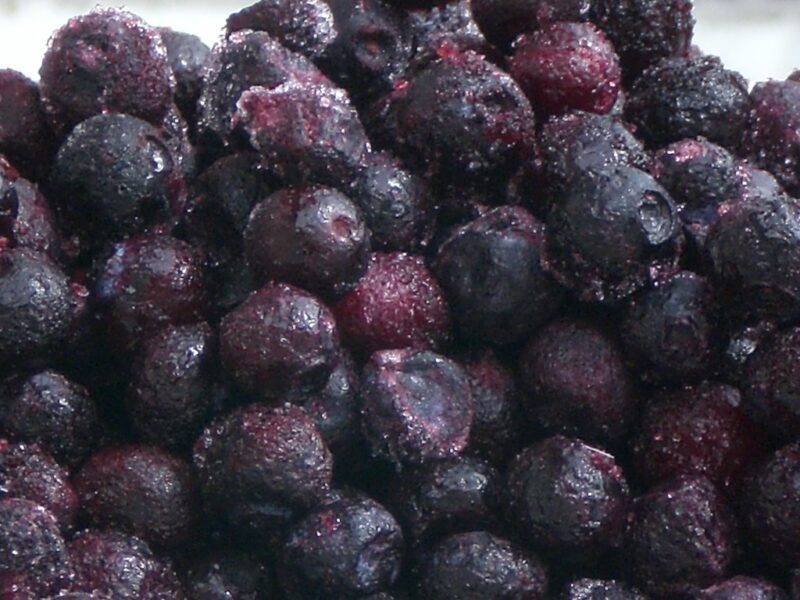
One of the most popular methods for preserving blueberries is freezing. Freezing retains their flavor, color, and nutritional value while ensuring they remain readily available for your cooking and baking needs.
Freezing Process
Preparation: Start with a gentle rinse under cool water to remove any dirt or residue. Follow this by laying them out on a paper towel to dry.
Sorting: Carefully inspect each berry, packing away any damaged ones. You want only the best for your frozen stash.
Flash Freezing: Spread the washed blueberries in a single layer on a baking sheet. This step prevents them from sticking together, making it easier to use just what you need later.
Freezing: Place the baking sheet in the freezer for 2-4 hours or until the blueberries are fully frozen.
Storage: Transfer the berries to an airtight freezer bag or container, removing as much air as possible. Label the container with the date and you’re good to go!
Tips for Freezing Blueberries
Do Not Thaw Before Using: Use blueberries straight from the freezer in baked goods or smoothies for the best texture and taste.
Consider Portioning: If you’re using blueberries in specific recipes, portion them into small bags. This way, you’ll have just the right amount ready to go.
Benefits of Freezing
Freezing is straightforward and doesn’t alter the nutritional value of blueberries significantly. You’ll appreciate the versatility it offers throughout the year, from winter breakfast bowls to summer desserts.
Canning Blueberries: A Rewarding Preservation Technique
If you’re feeling adventurous, canning blueberries is another fantastic method. It allows you to create flavorful blueberry preserves that can highlight their sweetness.
The Canning Process
Preparation: Just like with freezing, start with fresh, clean berries. Rinse them under cool water and examine for any bad ones.
Sterilizing Jars: In a large pot, boil clean glass jars and lids to sterilize them. This process helps ensure their longevity.
Cooking the Berries: Combine the blueberries with sugar and lemon juice in a saucepan over medium heat. Stir while simmering until the mixture thickens and the blueberries start to break down.
Filling the Jars: Using a ladle, fill the sterilized jars with the hot blueberry mixture while leaving some headspace at the top. This facilitates the sealing process.
Sealing: Wipe the jar rims to remove any residue, then place the lids on top. Screw on the metal rings until fingertip-tight.
Processing: Process the jars in a boiling water canner for about 15 to 20 minutes, ensuring they’re preserved properly.
Considerations for Canning
Sugar Alternatives: While sugar enhances flavor, you can experiment with honey or fruit juice for a healthier alternative.
Texture: Canning results in a softer blueberry texture, which can be ideal for spreads or as toppings.
Benefits of Canning
Canned blueberries are perfect for long-term storage. They maintain their delicious flavor and can be used in various recipes, offering that summertime sweetness throughout the year.
Dehydrating Blueberries: A Unique Approach
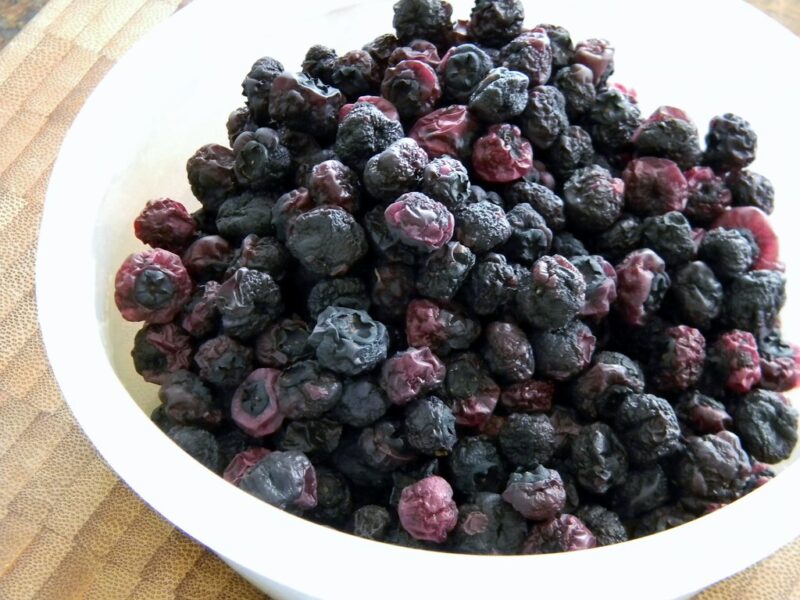
Dehydrating blueberries is another delightful avenue for preservation, transforming the juicy berries into chewy snacks.
The Dehydration Process
Preparation: Rinse your neatly sorted blueberries and dry them well.
Blanching (Optional): You might consider blanching the berries briefly in boiling water to enhance their color and texture. Follow this with an immediate transfer to ice water.
Dehydrating: Place the berries in a single layer on your dehydrator trays or a baking sheet if using an oven. Set your dehydrator to around 135°F or your oven to the lowest setting.
Timing: Dehydration can take anywhere from 8 to 14 hours, depending on your method. They’re done when they’re leathery and don’t have any moisture left.
Storage: Once cooled, pack them into airtight containers. Consider using vacuum-sealed bags for extended shelf life.
Benefits of Dehydrating
Dehydrated blueberries are compact and can take up less space than other methods. They make an excellent addition to trail mixes and granola bars, offering a unique flavor burst.
Making Blueberry Jam: A Delicious Way to Preserve
Turning blueberries into jam is a classic technique that not only preserves their essence but also creates a delightful spread to enjoy on bread, pancakes, or desserts.
The Jam-Making Process
Ingredients: Gather blueberries, sugar, and pectin (or lemon juice as a natural alternative).
Preparation: Start by rinsing and mashing the blueberries in a large pot.
Cooking: Add sugar and pectin to the mashed berries. Bring the mixture to a boil while stirring often.
Testing: Use a cold plate to test the jam’s consistency. Once it’s at the desired thickness, pour it into sterilized jars.
Sealing: Follow the same sealing process as discussed in canning, ensuring airtight conditions.
Tips for Jam Making
Flavor Boosts: Consider adding spices or zest (like lemon or ginger) to enhance the flavor profile of your jam.
Low-Sugar Options: Many recipes yield fantastic results with less sugar.
Benefits of Making Jam
Homemade blueberry jam can be a labor of love, but the result is a sweet and satisfying treat that encapsulates the flavors of summer. It’s a delightful way to DIY your pantry and impress friends with gifts of flavorful preserves.
Storing Fresh Blueberries: Tips for Longevity
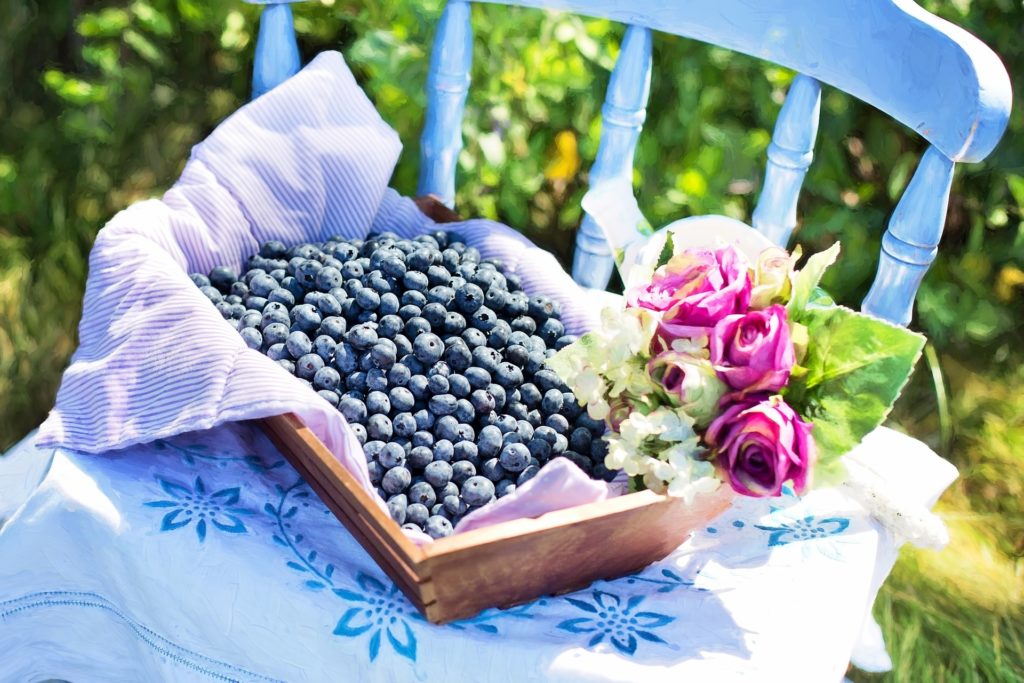
Even though preserving blueberries through freezing, canning, dehydrating, or jam-making is excellent, sometimes it’s nice to enjoy them fresh. Here are a few tips to keep them fresh longer:
Keep Them Dry: Moisture is the enemy. Store blueberries in a ventilated container in the refrigerator. Avoid washing them until just before use.
Use Vinegar Solution: Soaking them briefly in a vinegar solution (1 part vinegar to 3 parts water) before storing can help eliminate mold spores, extending their lifespan.
Avoid Overcrowding: Store blueberries in shallow layers. This prevents them from crushing each other, which can lead to quicker spoilage.
Monitor Regularly: Check for any spoiled fruits often. Removing any damaged berries will help prevent the rest from going bad.
Nutritional Value of Preserved Blueberries
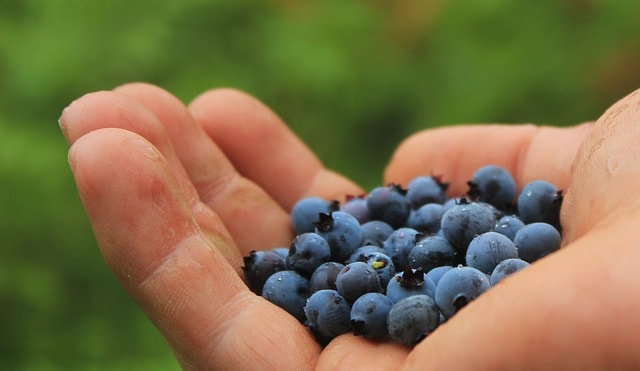
Understanding the nutritional value of blueberries adds to their appeal. They are low in calories yet high in several essential vitamins and antioxidants.
In Fresh Blueberries:
High in Vitamin C, which supports immune function and skin health.
Rich in dietary fiber, aiding digestion.
Contains anthocyanins, which have been linked to numerous health benefits, including reduced inflammation and improved heart health.
Preserved Blueberries: While some nutrients may decline slightly during preservation, many of the beneficial antioxidants remain intact. Frozen blueberries can actually be more nutrient-dense than fresh berries that have been stored for too long.
Using Nutritional Value to Your Advantage
Whether you drizzle blueberry syrup onto pancakes, sprinkle dried blueberries over salads, or enjoy a jar of homemade jam, knowing the health benefits makes each bite even more satisfying.
Exploring Creative Uses for Preserved Blueberries
Once you’ve successfully preserved your blueberries, the next step is to explore how to incorporate them into your meals:
Baking: Add frozen blueberries to muffins, pancakes, and breads. They can go straight from the freezer into your batter, providing delightful bursts of flavor and color.
Smoothies: Use preserved blueberries to create smoothies, pairing them with yogurt, spinach, and bananas for a nutritious meal.
Sauces and Dressings: Cook blueberries down with balsamic vinegar for a tangy sauce that goes great over grilled chicken or salads.
Trail Mix: Mix dehydrated blueberries with nuts and seeds for a delicious and energizing snack.
Desserts: Top cheesecakes, ice creams, or yogurts with homemade blueberry compote for an elegant finish to a dish.
The Marvel of Blueberries
Before we jump into preservation techniques, it’s worth taking a moment to appreciate what makes blueberries so special. Not only are they delicious, but blueberries are also celebrated for their health benefits. Rich in antioxidants and vitamins C and K, they contribute positively to heart health, brain function, and even skin condition. Enjoying blueberries in their season is a delight, but with the right preservation methods, you can extend that enjoyment far beyond summer.
Why Preserve Blueberries?
Flavor Retention: Preservation allows blueberries to maintain their rich flavors long after the harvest season.
Waste Reduction: If you buy blueberries in bulk or pick them yourself, preserving the excess helps minimize spoilage.
Versatility: Stored blueberries can easily enhance a variety of dishes, from morning smoothies to evening desserts.
Health Benefits: By preserving blueberries, you ensure uninterrupted access to their potent antioxidants and vitamins.
These reasons establish a solid foundation for understanding why it’s worth your while to learn preservation techniques.
This is the Season: Choosing the Right Blueberries
The key to successful preservation starts with the selection of your blueberries. When out shopping or picking, keep an eye out for:
Color: Look for plump, uniform blue berries. Avoid those with any hints of red or green, as that indicates they are under-ripe.
Texture: Fresh blueberries should be firm to the touch. Soft or mushy berries are usually past their prime.
Appearance: Check for any signs of mold or shriveling. A blueberry should have a slight bloom – a dusty white coating – which indicates freshness.
Once you’ve selected the best blueberries, it’s time to explore how to effectively preserve them.
The Joy of Preservation: A Personal Touch
The act of preserving blueberries isn’t just about storage; it’s about creating memories tied to seasons and experiences. Perhaps you remember the joy of picking blueberries with family on a sunny afternoon or the satisfaction of pulling a jar of homemade jam from your pantry. These shared moments connect us to the joy of creation and the beauty of nature.
As you embark on your preservation journey, relish the process. Whether you choose to freeze, can, dehydrate, or make jam, remember that these moments in the kitchen are an opportunity to bond with those you love. Teach your children the art of preserving, creating a tradition that continues for generations.
Conclusion: Savoring Blueberries Year-Round
Blueberries are a treasure of summer that can be transformed into delightful preserves, allowing you to savor their beauty beyond the season. Understanding the nuances of preserving blueberries provides not only practical knowledge but also encourages an appreciation for nature’s bounty. Whether you’re enjoying frozen blueberries in the winter or sharing homemade jams in summer barbecues, each method allows you to cherish the essence of this fantastic fruit throughout the year.


